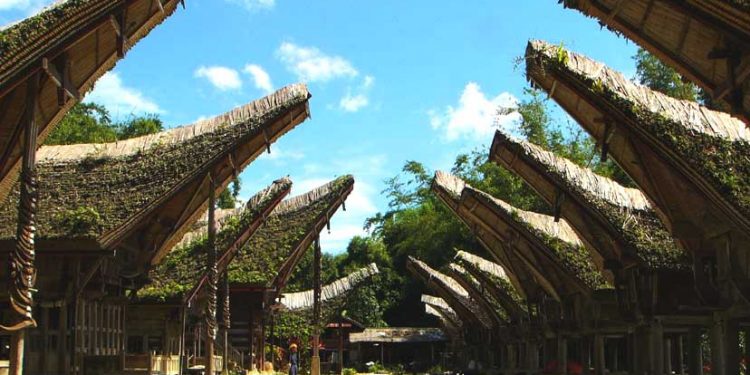It took more than 300 years after the first Europeans arrived on Sulawesi for them to discover Tana Toraja. The remoteness and seclusion of the area is still part of the adventure of getting there, but today the drive from Makassar, the largest city on Sulawesi, only takes about nine hours.
The road trip along the eastern fringe of Bantimurung–Bulusaraung National Park includes some of the most spectacular landscapes I’ve seen in all of Indonesia: in this area, so famous for its rich culture and colorful traditions, the landscape is merely an unexpected bonus.
Tana Toraja is becoming an increasingly popular destination, especially with European visitors, with one of the main attractions being the dramatic, age-old traditions around the magnificent and elaborate funeral ceremonies.
Even by Torajan standards, this funeral is a large one. For an upper-class funeral, a bare minimum of 24 buffalo must be sacrificed. The most important aspect of the entire ceremony – the ‘main event’ – will be the slaughter of the 30 precious buffalo.
In Tana Toraja, families are judged on the lavishness of their funeral ceremonies, and that judgment hinges not only on the number of buffalo sacrificed but also on the quality of those buffalo.
Mottled black-and-white buffalo are called Bonga here and it is the most prized kind.
In fact, it’s more than just the color that constitutes a prize buffalo, and this specimen has all the necessary qualities including the blue eyes, the long tail that almost touches the ground, and, of course, the size and bulk of an animal that has been nurtured all its life. One of the most important factors is the location of what’s known as the palisu – the swirl, like a little whirlwind of fur, where the hair parts on the buffalo’s head.
In a wide clearing beyond the covered market, more than 200 buffalo are being paraded, stroked, coaxed, and fed by doting owners. It is a beauty pageant for some of the most honored animals in the world, yet every single one is destined to be a funeral sacrifice (other – less prized – animals are used at wedding and birth ceremonies).
The sacred buffalo of Tana Toraja are treated almost like kings among animals, and it would be considered sacrilege ever to expect them to work.
Today, more than half of all Torajans work in other areas to send money home, often to cover the expense of funerals that could cost as much as USD 150,000. The extensive funeral preparations have developed from unique ceremonies that date back well over a thousand years.
As the ceremony may be some time after the person’s death, the body of the loved one will be kept in the home until then, even if that is a period of years. The Torajans see death as a gradual process towards Puya, rather than the sudden event it is treated as in other societies.
Through the carved timber walls of the boat-roofed house, I hear hammering. More than 500 people have been at work during the last month creating a temporary village for the funeral. It looks like they are preparing a movie stage-set for Seven Years in Tibet.



